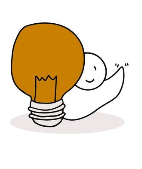Exploring the student experience at a top Australian university
Industry
Tertiary Education
Duration
9 weeks
Deliverables
6x key insights focused on both the student and staff experience
Overall system model of student service interactions across the university
Overall system model for student service navigation and use
Impact
Imparted a deep understanding of the current student experience at the university enabling the future of its Student Services function to be designed
WHAT was the problem
When students head to university, they usually have a clear idea of why they are there. Typically, they are also confident about what they want to achieve (a degree, most often). Where students often need some support though, is the “how” - how do I navigate campus, how do I enrol in that course, or how do I apply for special consideration? It’s here that the role of Student Support Services becomes critical: making sure students spend less time on administrative issues and more time focussed on learning.
This was the backdrop for our partnership with a prominent Australian university. Our client was at the start of a business transformation, planning to move the Support Services function from individual faculties, to a new centralised model. They were committed to becoming more human-centred as an organisation and wanted to ensure the upcoming transformation would revolve around the student experience.
Some of their known pain points were: the high volumes of student enquiries, fragmented engagement channels, and blurred lines of responsibility in delivering services. Despite the best efforts of professional staff, students were often left confused about the “how” in their university journey.
WAVE was brought in to help build this understanding of the student perspective and challenge existing assumptions about student behaviour in order to inform the design of the new Student Support Services experience.
APPROACH we took
Understanding the student experience
Using a combination of research methods, we captured the current state experience for students and staff from all angles - including observations with faculty staff, in-depth interviews with students and listening-in on Student Support enquiries.
We engaged students from a range of different disciplines, backgrounds, ages and life experiences to deeply understand their needs. We explored what they needed from a support model, but also to unpacked what university meant for them in the context of their lives and how they think about making decisions.
Combining all the work to create a holistic story
We were left with a wealth of rich information about student journeys, about critical moments they navigate and pain points in the support system they experience. We overlaid this with the internal view from professional staff and added existing work being conducted elsewhere across the university. Collaboratively, we pulled these sources of knowledge together to create a cohesive and holistic story to use as a foundation for the project.
A Mental Model for students
An important contribution to the work was highlighting the mental model that students use to navigate services. This model showed that the level of support students need is dependent on two key variables: 1) their confidence in their problem solving abilities and 2) trust in the system. As both trust and confidence increases, students feel more empowered to manage their own experience.
Challenging assumptions and highlighting opportunities
Bringing our research to life we crafted a series of actionable insights about the current state of student support that challenged internal assumptions and reframed how our partner thought about the student experience.
We used our insights to identify a number of opportunities to improve the experience of students and professional staff. We worked with our client to prioritise these into quick wins and high impact categories, making them more practical and actionable.
VALUE we created
Challenging existing perceptions to inform future direction and investment
Through this project, we challenged existing perceptions about student behaviour by providing a greater level of clarity around their needs and the mental models they use. While we focused specifically on the student experience of Support Services, the models we created resonated across the university. This enhanced level of understanding set our stakeholders up with a clear pathway to reimagine the student service experience in a human-centred way, reducing the risk of designing and delivering future services that just wouldn’t work for students.
EMPOWERMENT we embedded
A multi-disciplinary approach to tackle complexity and drive collaboration
Key to this project was the formation of an extended team with members of faculties and departments from across the university - this led to new collaborative relationships being formed across the organisation and encouraged ownership of the insights that emerged, establishing future champions for the work.
Experiencing human-centred design in practice
Our client was keen to adopt a human-centred approach to their work, but needed some support to show them the way. Throughout our discovery process, staff and students were exposed to a wide range of different research methods including: student services walkthroughs, frontline staff focus groups, call-listening, and one-on-one interviews with faculty leaders. The quality and depth of findings that came out of these initiatives highlighted both the value of this particular research approach, and that to be truly human-centred you often need to engage in conversations rather than relying on surveys alone.
Project Reflections
WAVE Reflections
“Reflecting on the project, there is something about the energy, dynamism and youth of a university campus that’s hard to find anywhere else. That makes it a great place to be on the ground doing research and a great subject for thinking about at a system level. An interesting take away for us was the way in which younger generations are engaging with services - the reality is that the average eighteen year old is going to be more comfortable searching a question via Google or scrolling through comments on Tik Tok, than spending time clicking through the links of an organisation’s website or looking through FAQs. Taking the time to really understand someone’s mindset can be extremely important in determining how someone might engage with the service you are providing.”
- Mackenzie | Service Designer, WAVE
This case study was compiled by Mackenzie Campbell, Service Designer with WAVE. Mackenzie is a curious human passionate about using design-led approaches in unchartered territories. With a background working across strategic projects in Federal Government, he is always looking for new ways to put the community at the forefront of decision-making.
Get in touch
If you need a proven methodology to identify and solve problems, creating a culture of innovation along the way, we are here to help. We’d love to talk more about what you need and how we’ve helped in similar situations.








